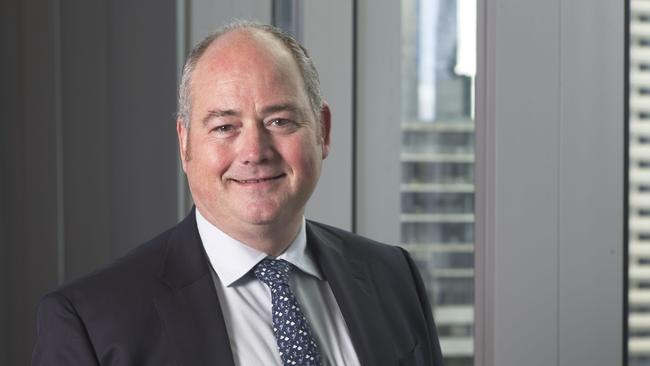New types of dwellings to house people are needed to fix ‘woeful’ situation
The NAB chief executive says housing supply is the big issue, while Bendigo Bank CEO Marnie Baker has raised concerns over more borrowers being pushed to non-bank lenders.

The housing crisis is the single biggest policy issue facing Australia, with supply-side problems the greatest challenge amid “woeful” new dwelling construction, according to NAB chief executive Andrew Irvine.
Speaking at a banking conference in Melbourne on Wednesday, Mr Irvine, who took on the top job at the bank in April, also addressed the health of Australian households and businesses, saying many were doing it tough but coping in the more trying environment.
“Often the narrative (on housing) is the demand side but we’ve got to fix the supply side. The rate of new construction in Australia is woeful,” Mr Irvine said.
“And it’s a plethora of things that need to be addressed, from planning permission to taxation to new methods of housing modularisation to more innovation around footprints.”
In the last four years the average size of an Australian household has fallen by 10 per cent, he added.
“If nothing else, we need 10 per cent more homes, more dwellings, to house the people we have, never mind the migrants coming to our shores,” Mr Irvine said.
“We need to think about new types of dwellings to house people and it’s my view that this is the single biggest policy issue facing the country.”
Speaking on the same panel, Bendigo Bank CEO Marnie Baker raised concerns over more borrowers being pushed to non-bank lenders as people struggle to access home loans from mainstream lenders.
“I feel we’ve got to a position as a banking industry where we’re not lending as much as we could to people who are able to afford to put themselves into a house. And this doesn’t go to the accessibility but it does go to the affordability of it,” Ms Baker said.
“More people are being forced into the non-bank sector for housing and that really concerns me.
“We are infatuated with housing in Australia but it worries me that people think they might never get that opportunity (to own their own home).”
The bank bosses were speaking ahead of Wednesday’s shock inflation data, which surged 4 per cent in the year to May, higher than the 3.8 per cent expected. The lift in prices will add pressure on the Reserve Bank to hike rates, with markets now tipping a 40 per cent chance of a rate rise at the August meeting and a 46 per cent chance of an upward move in September.
With rate hikes now firmly back on the agenda, borrowers are facing an even greater tightening of belts.
Ms Baker said the overwhelming majority of Bendigo Bank home loan borrowers were ahead on their repayments.
“We’re still seeing that squirrelling away of money that we saw through Covid. Eighty-six per cent (of borrowers) have a buffer; 46 per cent are at least one year ahead on repayments and 31 per cent are at least two years ahead. So people have managed their money well,” she said.
Australians are doing it tough in the downturn but managing well, Mr Irvine said, as he noted the divergence in state economies and demographics.
“There are real issues that Australians and our customers are having to deal with. The averages are some of the most challenging in 30 years in our economy,” Mr Irvine said.
“Australians aren’t used to living in a country that isn’t growing with really strong economic activity. And while it’s not recessionary … the averages don’t tell the story at all. They are a composite of a very diverse country. WA’s economy is growing at 6 per cent. That’s booming. Queensland is growing, with significant inward migration from outside and within Australia, doing quite well. And then southeast Australia, Victoria in particular, that’s doing it tougher.”
There’s also a disconnect between households from a demographic standpoint, he added.
“Older Australians typically own their homes. They’ve paid off their home loan, they’re getting a great rate of interest on that term deposit and they’re feeling pretty good. And that’s probably a third of households out there.”
Others, including younger Australians and renters, were doing it much tougher, he said.
“Now, the good news is that people have jobs. And we’ve still got really, really low levels of unemployment. And as a result, the vast majority of households and customers are getting by. They’re not enjoying it, but they’re getting by,” he said.




To join the conversation, please log in. Don't have an account? Register
Join the conversation, you are commenting as Logout